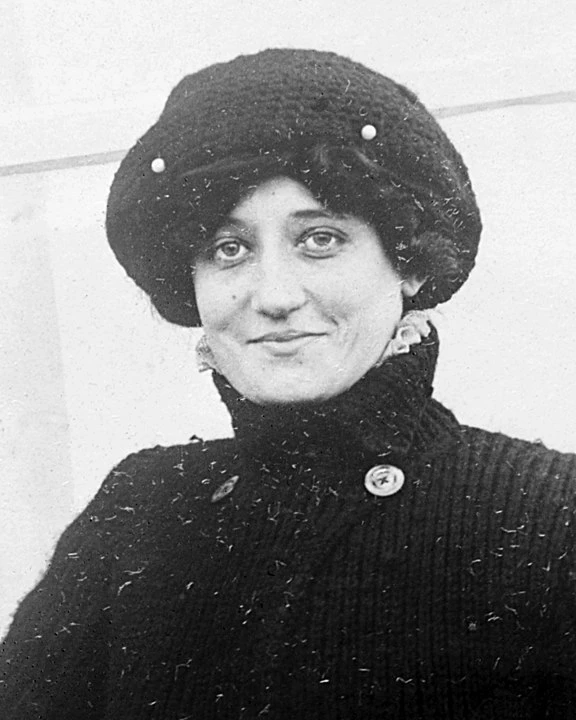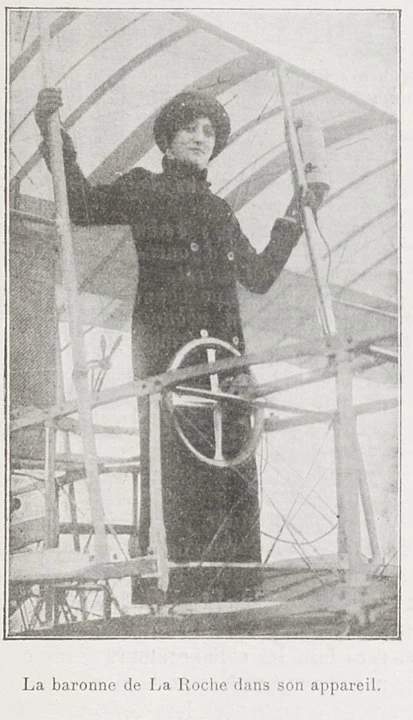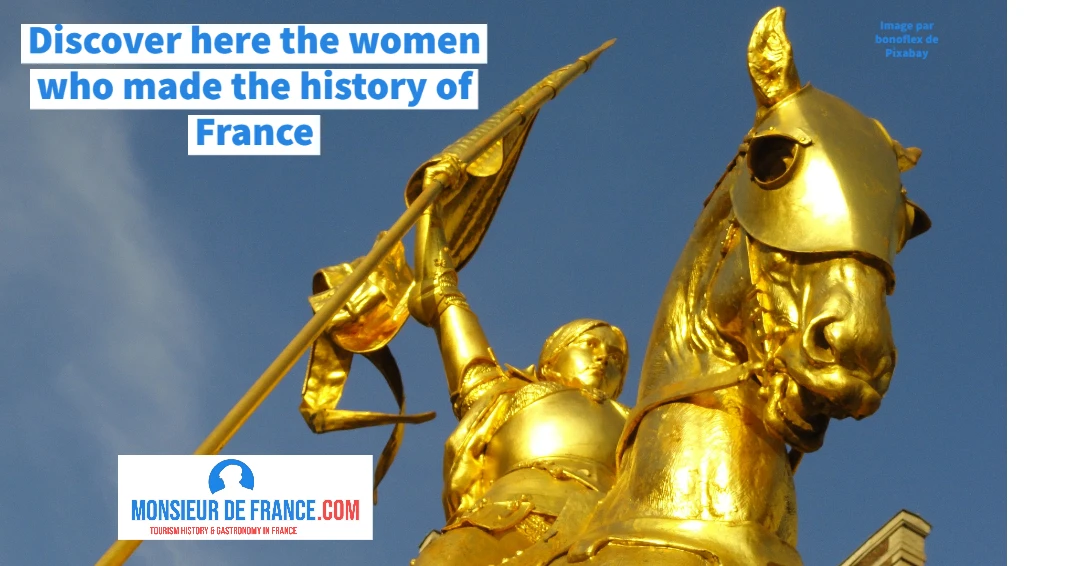The origins of a pioneer
Élisa Léontine Deroche was born in Paris on August 22, 1882, into a family of no means. Her father was a leatherworker, her mother a seamstress. Nothing predestined her to become an aviatrix. And yet, right from childhood, she stood out for her insatiable curiosity. She loves movement, speed, thrills. In a modernizing Paris, she took an interest in technical innovations, notably the bicycle, the automobile and the motorcycle. Early on, she realized that to exist in a world where women were rarely visible, she had to create a character for herself. She embarked on an artistic career: a stage actress, she adopted an elegant stage name, Raymonde de Laroche, which sounded like that of an aristocrat. This pseudonym would become her public identity, the one by which history would remember her. Her marriage to Louis Léopold Thadome in 1900, followed by her divorce in 1909, marked the beginning of an independent life. In 1915, she remarried Jacques Vial. But between these two unions, an unexpected passion was to change her destiny: aviation.
Elisa Deroche / Library of Congress of the United States of America;
Encounter with aviation
At the end of the XIXᵉ century and the beginning of the XXᵉ, the conquest of the sky was at the heart of modern dreams. The Wright brothers flew in 1903 in the United States, Santos-Dumont fascinated Paris with his airships, and European pioneers multiplied their experiments. Raymonde de Laroche, fascinated, attended demonstrations. She wants to fly. In an almost exclusively male world, she dares to ask to learn to fly. She turns to the Voisin brothers, renowned aircraft builders. In 1909, the Voisins agreed to teach her the basics of flying. She soon showed exceptional qualities: courage, control and composure. On October 22, 1909, she made her first solo flight, aboard a Voisin biplane. She became the first woman in the world to take to the skies alone.
Patent no. 36: a historic moment
On March 8, 1910, the Aéro-Club de France awarded him the brevet de pilote n° 36. The number may seem insignificant, but it's historic: of the first 35 licensed pilots, all were men. She, Elisa Deroche, is the first woman to break this barrier. The press seized on the event. She was dubbed "the Baroness of Laroche". The title of nobility was invented by journalists to accentuate the romantic aspect, but it remained attached to her name. This patent made her a part of the universal history of aviation. She became a symbol: a woman could fly, a woman could equal men in this new and risky field.
Baroness Deroche in her airplane in 1907 / United States Library of Congress
The first air shows
As soon as she obtained her license, Raymonde de Laroche was asked to take part in airshows. These events attracted huge crowds, eager to see planes take off, turn and land. Female aviators were rare, which accentuated her aura. She took part in demonstrations in Rouen, Reims and Lyon, as well as abroad. In St Petersburg, she was received by Tsar Nicholas II, impressed by her audacity. She also flew in Egypt and Germany, multiplying her experiences and encounters. Every appearance is an event: seeing a woman master a flying machine fascinates as much as it shocks some conservative minds.
A risky life
Early aviation was extremely dangerous. Aircraft were fragile, unstable and often capricious. Accidents were frequent. Raymonde de Laroche herself suffered several. In 1910, she was seriously injured in a crash. She escaped, but had to stop flying for several months. But these ordeals did not stop her. She returned to the stick as soon as she could. Her determination impresses. She shows that her passion transcends fear and pain.
Records and international recognition
After graduating, Raymonde de Laroche didn't just want to fly, she wanted to push the limits. She entered competitions, breaking women's records and proving that a woman could excel in this field. In November 1913, she completed a four-hour non-stop flight. A feat at a time when mechanics were uncertain and every minute of flight was a victory. This feat earned her the Coupe Fémina, a distinction awarded by the Aéro-Club de France to the most successful female aviators. Her name began to circulate throughout Europe. She is invited to the most prestigious meetings, admired for her tenacity and courage. Everywhere she goes, she embodies a modern image of the woman, free and daring.
Baroness Deroche in her aircraft in 1907 in: La Revue aérienne / director Emile Mousset Author: Ligue nationale aérienne, Paris.
The test of war
When the First World War broke out in 1914, Raymonde de Laroche was determined to offer her talents to her country. But women were not allowed to fly in the military. Rejected as an aviatrix, she made a different commitment. She became an automobile driver for the front, transporting wounded and supplies. This experience reinforces her image as a determined and courageous woman. Even deprived of a plane, she finds the means to serve, proving once again that her life is guided by daring and surpassing oneself.
The last flights and the tragic end
After the war, Raymonde de Laroche returned to flying airplanes. She dreamed of even more impressive records. In June 1919, she reached an altitude of over 5,000 metres, according to some accounts. But a few weeks later, on July 18 1919, tragedy struck. During a test flight in Le Crotoy, Picardy, the aircraft she was co-piloting with aviat eur eur Barrault crashed. She died instantly, aged just 36. Her death shocked the aviation world. Newspapers salute her courage and recall her exploits. She disappeared just as aviation was entering a more modern era, leaving her name engraved as that of a pioneer. She is buried in the Père-Lachaise cemetery in Paris. Her sober tomb is regularly decorated with flowers in tribute.
FAQ
Who was the Baroness de Laroche
Élisa Léontine Deroche, known as Raymonde de Laroche, was the first woman in the world to obtain an airplane pilot's license, in 1910.
Which patent did she obtain?
She was awarded pilot's licence no. 36, issued by the Aéro-Club de France.
When did she make her first solo flight?
October 22, 1909, on a Voisin biplane.
What is its contribution to air shows?
She took part in numerous meetings in France and Europe, setting women's records for altitude and duration, and won the Femina Cup.
How she died
She died on July 18, 1919 in a plane crash in Le Crotoy, Picardy.
Where she is buried
She is buried in the Père-Lachaise cemetery in Paris.







